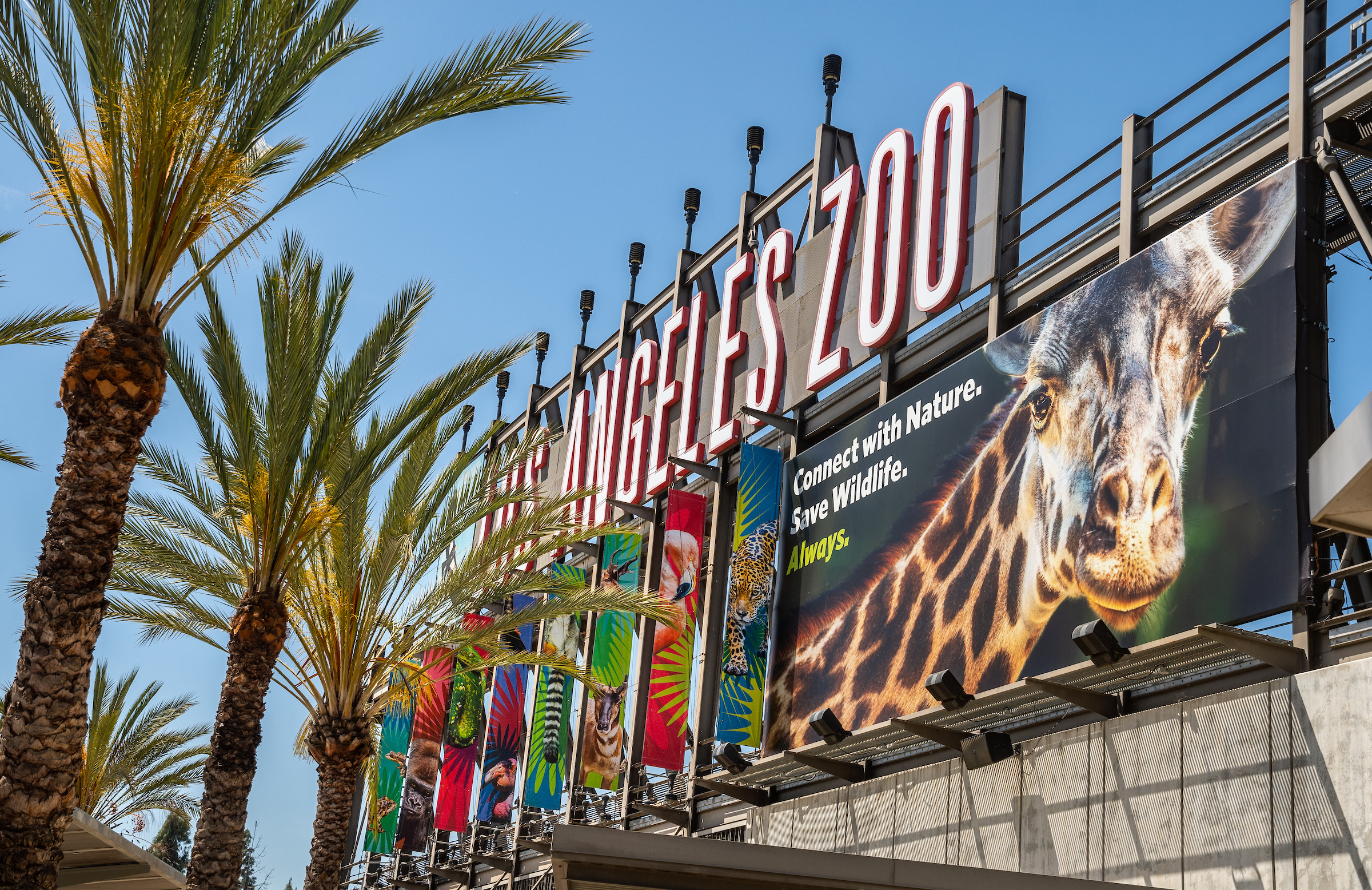Los Angeles Zoo History
Take a look back at just some of the many remarkable animals, conservation achievements, firsts, innovations, partnerships, friends, and advocates that have made the Zoo what it is now.
1966: The L.A. Zoo Welcomes Visitors
On November 28, 1966, the Los Angeles Zoo opened its gates for the first time in its current location – a hop, skip, and jump down Zoo Drive from its former incarnation, the Griffith Park Zoo. The opening day ceremonies included Los Angeles Mayor Sam Yorty, the United States Army color guard, and the Los Angeles Symphonic band.
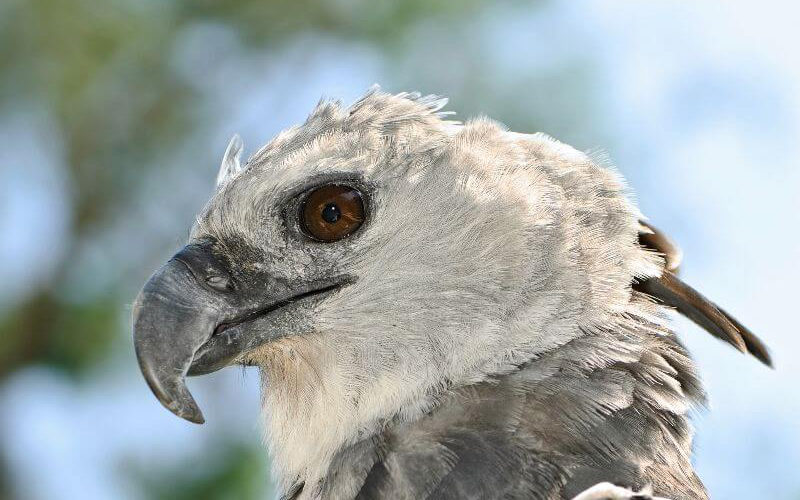
1966: Harpy Eagle Lands at The L.A. Zoo
The L.A. Zoo has been working with harpy eagles for 50 years, since the arrival of a male from Peru’s Parque las Leyendas in 1966. With the acquisition of a female from northern Ecuador in 1970, the Zoo initiated a breeding program and soon hatched the first harpy eagle chicks in the United States.
1971: Our First Conservation Award
In 1971, the first captive hatching of the dog-toothed cat snake earned the L.A. Zoo its first Edward H. Bean Award from the Association of Zoos and Aquariums. The award, named for the first director of Chicago’s Brookfield Zoo, recognizes captive breeding efforts that significantly enhance the conservation of a species. Our second Bean Award-shared with the San Diego Zoo and Wild Animal Park-came in 1989 for the California condor program.
1971: Stars Align For Our First Gala
The Greater Los Angeles Zoo Association’s first fundraising gala was held on September 24, 1971. The Primate Ball, co-chaired by actor Jimmy Stewart’s wife, Gloria, was so named because its goal was to raise money for a planned primate village. T.V. personality Ed McMahon was master of ceremonies, and guests included stars Lucille Ball and Gregory Peck. The following year, the event was christened the Beastly Ball, a name that stuck. It remains one of L.A.’s most highly anticipated fundraising events each year. The 1971 event brought in about $55,000 while the 2016 total topped $1.1 million.
1976: Arrivals From Our Sister City
On November 15, 1976, to commemorate the United States’ bicentennial, the city of Nagoya, Japan (one of Los Angeles’ sister cities) presented the L.A. Zoo with the first pair of Japanese serow ever exhibited in the Western hemisphere. In return, the L.A. Zoo gifted Nagoya Zoo with a pair of yearling Rocky Mountain goats. Once a declining species, the Japanese serow has rebounded thanks to conservation measures in its homeland.
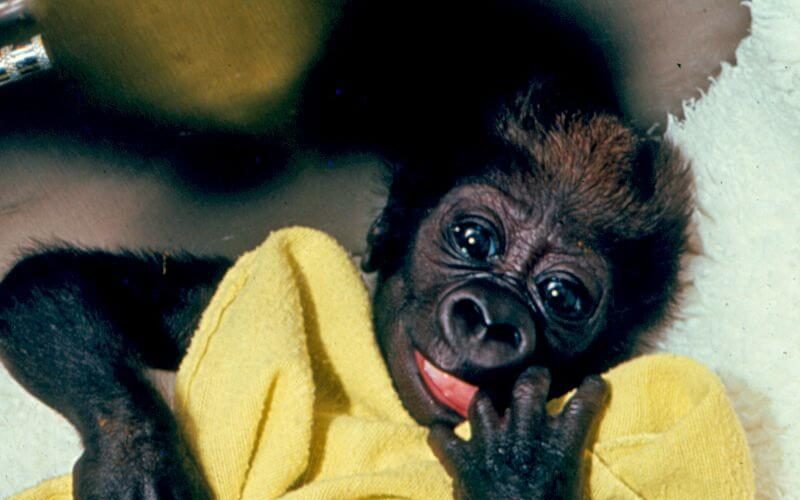
1977: Hail, Caesar
The first gorilla ever successfully delivered by Cesarean section, Caesar owed his life to L.A. Zoo officials who decided to intervene when Ellie, a gorilla with a history of killing her offspring, became pregnant again. Assisted by a surgical team from Martin Luther King Jr. Medical Center, veterinarians delivered the five-pound, two-ounce baby boy on June 1, 1977. His historic birth made Caesar an instant celebrity.
1977: Mountain Tapir Born in Historic First
The L.A. Zoo made history on June 4, 1977, with the arrival of the first mountain tapir ever born in a zoo. L.A. was also the first zoo to successfully breed all four known tapir species (Brazilian in 1967, Malayan in 1973, and Baird’s in 1974). The mountain tapir is the most endangered of the tapir species, and the rarest in zoos.
1978: Arabian Oryx Start Journey Back From Extinction
In May 1978 – six years after the last remaining wild Arabian oryx was killed – the Zoo transported eight oryx to the Hai-Bar Reserve in Israel. It was the first of many such efforts undertaken by zoos (including San Diego and Phoenix) to return the species to its former range. By 2011, the wild population had swelled to more than 1,000, and the Arabian oryx was removed from the endangered list – the first time the status of a species once declared extinct in the wild was upgraded.
1981: Research Department Established
When the Los Angeles Zoo established a research department in July 1981, it was only the eleventh zoo in the nation to do so. The department’s goal is to undertake studies aimed at increasing knowledge of zoo animals’ behavior, facilitating reproduction, and improving living conditions. GLAZA docents and general volunteers have played a key role in this work since the department’s inception.
1981: Zoo Magnet School Opens
The North Hollywood High School Zoo Magnet began in 1981 and moved into its own campus (adjacent to the L.A. Zoo) in the fall of 1983. A unique cooperative effort between the Zoo and the L.A. Unified School District, the Zoo Magnet offers a rigorous science-based curriculum along with opportunities to utilize the resources of the Zoo. The popular program has grown from 50 students in its first year to about 300 today.
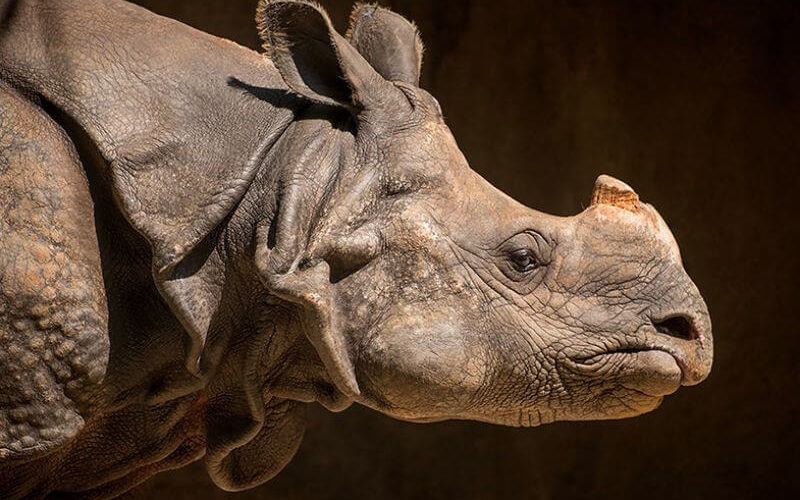
1981: Zoo Teams Up to Save Indian Rhinos
The Association of Zoos and Aquariums (AZA) – then known as the American Association of Zoological Parks and Aquariums – developed the first Species Survival Plans (SSP) in 1981. At that year’s national conference in New Orleans, the Indian rhinoceros was among a handful of species designated for immediate attention. L.A. Zoo Senior Animal Keeper (and later General Curator) Mike Dee was elected the first Indian Rhino SSP coordinator, a post he held for 21 years. Today, the Zoo participates in more than 50 SSPs.
1982: G’day! Koalas Arrive in L.A.
When the L.A. Zoo’s first koalas (two males and six females) arrived on March 3, 1982, these iconic creatures from Down Under were rarely seen outside Australia. As part of the stringent conditions the Zoo had to meet before the transaction was approved by the Australian government, eucalyptus branches from L.A. were flown to the Melbourne Zoo so the koalas could sample them. Fortunately, the finicky eaters approved of their California cuisine!
1984: BabirUSA in the U.S.A.
A babirusa pair that arrived at the Zoo in June 1984 from Germany were the first wild pigs imported into the United States in more than 40 years. Since then the Zoo has had steady success breeding this unusual species.
1984: Panda-monium! Winning Hearts During the Olympics
To commemorate the 1984 Summer Olympics being held in Los Angeles, the People’s Republic of China loaned the L.A. Zoo a pair of giant pandas, Ying Xin and Yun Yun. A pavilion was quickly constructed, and the pandas made their debut on July 20, 1984. Guests waited in line for up to four hours to catch a glimpse of the celebrated guests, whose three-month stay helped smash previous attendance and membership records.
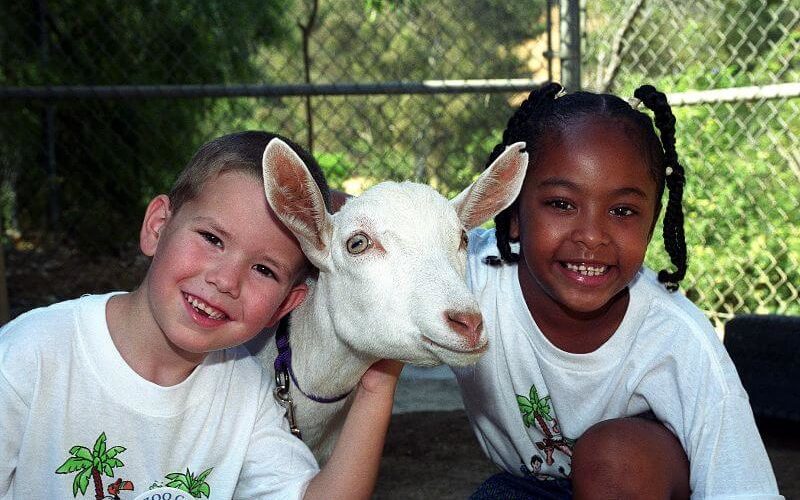
1987: Zoo Camp Opens
Zoo Camp debuted in August 1987 with four week-long sessions for children ages 8 to 11. An instant hit with area youth, the program evolved over the years to include spring and winter sessions and greatly expanded offerings during the summer.
1989: Golden Lion Tamarins Released Into Wild
In December 1989, a family of golden lion tamarins from the Los Angeles Zoo was released at Poco das Antas Reserve in Brazil. Forty-three institutions (including 41 zoos) participated in the reintroduction program, which released a total of 146 captive-born golden lion tamarins into the wild between 1984 and 2001. With dwindling wild populations augmented by zoo-bred tamarins, the species’ status was upgraded from critically endangered to endangered in 2003.
1990: First California Condor Chick Hatches
The first California condor chick to hatch at the Los Angeles Zoo, a female dubbed Kareya, arrived on March 23, 1990. (An egg laid at the L.A. Zoo the previous year had been transported to the San Diego Wild Animal Park for hatching.) The Zoo has housed California condors since 1967, when Topatopa came to the Zoo as a fledgling rescued from the wild, and has been a committed partner in the California Condor Recovery Program (CCRP) since its inception. More than 160 condor chicks have since hatched at the Zoo, and the species’ total population – once as low as 22 individuals – now surpasses 520.
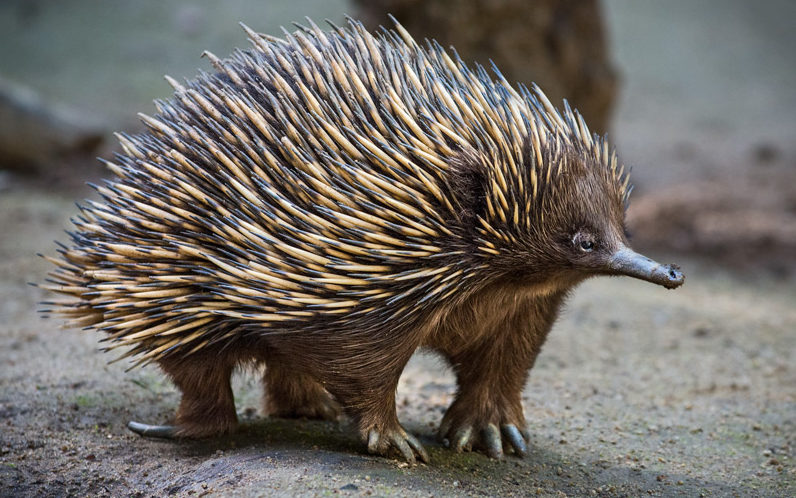
1990: Welcoming Echidna ”Koo” to the L.A. Zoo
Short-beaked echidna puggle Koo hatched in May 1990. The Los Angeles Zoo is one of few zoos outside of Australia to house these unusual egg-laying mammals. We are one of an even smaller number of zoos that have successfully bred the echidna. Koo shares an outdoor exhibit with koalas and wallabies in the Zoo’s Australia section.
1990: Enrichment Program Begins
The Zoo’s behavioral enrichment program was initiated in 1990, a time when few zoos had formal programs devoted to this emerging area of animal care. Enrichment arose from the realization that meeting animals’ psychological needs was as important as meeting their physical ones.
1991: Emi the Sumatran Rhino Arrives
The first two Sumatran rhinos to set hoof in the Los Angeles Zoo (Mahatu in 1989 and Rapunzel in 1990) were just passing through – each enjoyed an extended layover here while waiting for temperatures to warm enough to continue on to the Cincinnati and Bronx Zoos, respectively. But the third time’s the charm, and the next Sumatran rhino to arrive in Los Angeles would stay for four years and become a beloved member of the Zoo family. Two-year-old Embam (”Emi”) arrived on November 25, 1991. In 1995, she was transferred to Cincinnati Zoo, where it was hoped she would breed. Her firstborn, Andalas, was the first Sumatran rhino born in a zoo in more than a century! Andalas, himself an L.A. Zoo resident from 2003 to 2007, now resides at Way Kambas National Park in Indonesia, where he has sired two calves.
1992: Historic Birth of a Coquerel’s Sifaka
The first successful birth of a Coquerel’s sifaka outside of Madagascar occurred at the L.A. Zoo in February 1992. Four years earlier, a consortium of American and European institutions, including the Los Angeles Zoo and the Duke Lemur Center (DLC), formed the Madagascar Fauna Group to coordinate efforts to conserve Madagascar’s endangered wildlife. The L.A. Zoo’s sifakas are on loan from DLC, which oversees the breeding program and retains ownership of all the sifakas in the U.S.
1993: Zoo Education Innovation Honored
An interactive innovation of the L.A. Zoo’s Education Division, the Zoo Discovery Kit – a canvas tote containing teaching tools to help K-2 teachers lead Zoo tours – was honored with the prestigious AZA Education Award in 1993. The kit’s touchable artifacts, crafts, and specialized pre- and post-visit curriculum bring added dimension to school field trips.
1995: Sir Edmund Hillary Reaches L.A. Zoo
The Zoo has hosted or sponsored numerous lectures by famed explorers and wildlife professionals over the years, including paleoanthropologist Louis Leakey, primatologists Jane Goodall and Birute Galdikas, and conservationist and biodiversity expert Russell Mittermeier. New Zealand explorer Sir Edmund Hillary, who, along with Nepalese Sherpa mountaineer Tenzing Norgay, was the first climber to reach the summit of Mt. Everest, donated the proceeds of his June 28, 1995, lecture to the Zoo.
1997: Zoo Commission Formed
On July 1, 1997, the L.A. Zoo became its own department within the City of Los Angeles (it had previously been managed by the Recreation and Parks Department). The shift gave the Zoo a greater voice in City Hall and more direct control over daily operations. At the same time, the Los Angeles Zoo Commission, comprised of five mayoral appointees, was formed to provide oversight. Betty White (shown with then Zoo Director Manuel Mollinedo, GLAZA Chair Susan Mazzarella and fellow commissioners David Bruyette, Shelby Kaplan Sloan, Julie Dees, and Guadalupe Reyes) was one of the first L.A. Zoo Commissioners, serving from 1997 to 2005.
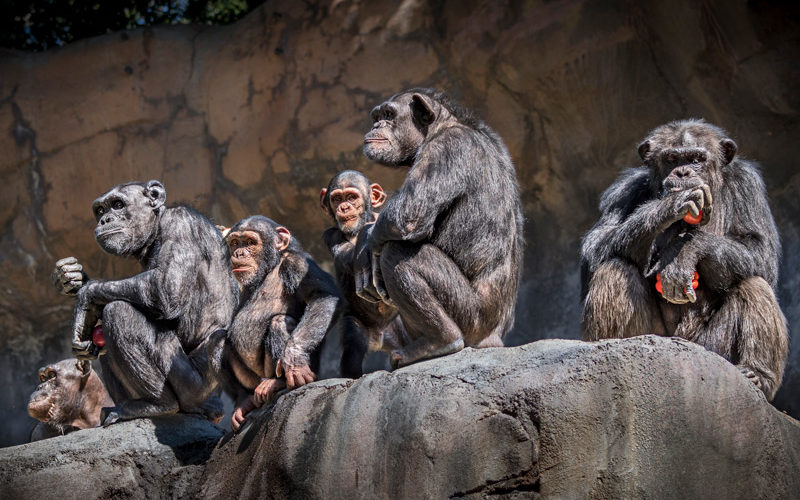
1998: ”Chimpanzees of the Mahale Mountains” Opens
The first capital project completed under the Zoo’s Master Plan, Chimpanzees of the Mahale Mountains opened on August 13, 1998. It is now home to the largest multi-male, multi-female chimpanzee troop in any zoo accredited by the Association of Zoos and Aquariums (AZA). This is possible partly because of exhibit features that facilitate management of a large social group and also due to the expertise and talents of the animal care staff that cares for the apes.
1998: Voters Approve Funds to Revitalize the Zoo
On November 3, 1998, Los Angeles voters overwhelmingly passed Proposition CC, which earmarked $47.6 million in bond funding to revitalize the L.A. Zoo. The Greater Los Angeles Zoo Association (GLAZA) developed and funded the public campaign for the proposition, the largest of a series of bond measures to benefit the Zoo (County Proposition A-1 in 1992 and A-2 in 1996, City Prop K in 1996). The bond money, along with more than $30 million in private funds raised by GLAZA, helped build various capital projects – culminating with the jaguar habitat in Rainforest of the Americas.
2001: Children’s Zoo Opens
Conceived around the theme of ”protect and respect,” the Winnick Family Children’s Zoo opened in 2001. The children’s zoo features a contact yard, a nursery, an open-air performance space, and a variety of animal habitats designed to inspire a child’s curiosity.
2002: State-of-the-Art Medical Center Opens
The Zoo’s state-of-the-art veterinary facility was named the Gottlieb Animal Health and Conservation Center on January 23, 2006. The 50,000-square-foot facility opened in 2002 and includes a surgical suite and treatment room, multiple-sized animal wards, an intensive care unit, a full-service commissary, administrative offices, and a CDC-certified quarantine center.
2003: Field Studies Grant Established
The Zoo’s Animal Keeper Advanced Studies Fund was established in 2003 to provide keepers with opportunities for hands-on field experiences across the globe. Upon their return, they share their experiences and insights with the staff and apply what they’ve learned to their work with the Zoo’s animals. The program has sent 17 L.A. Zoo keepers to pursue field opportunities on five continents.
2004: Restoring Critically Endangered Bongos
In January 2004, a group of 18 zoo-bred mountain bongos (including a female from the L.A. Zoo) were flown to the Mount Kenya Game Ranch in Africa. All were descendants of animals shipped from Kenya to U.S. zoos in the 1960s by a group of conservationists that included actor William Holden. In the succeeding decades, the zoo population grew to about 400 individuals, while the species all but vanished from Kenya. The repatriated bongos became founders for a breeding colony whose members will be gradually acclimated to the wild. The mountain bongo repatriation project represents a rare milestone in wildlife conservation, aiming to restore a critically endangered flagship species to self-sustaining levels in the wild from captive U.S. zoo stock.
2005: Pangolin Arrives at the Zoo
A baby African tree pangolin confiscated by wildlife officials at Los Angeles International Airport in January 2005 was brought to the Zoo for caretaking. Only a handful of zoos in the world had ever kept these unusual creatures alive for any length of time, so precious little was known about their biology, husbandry, or nutritional needs. Keepers managed to bring the malnourished animal up to a healthy weight, and it thrived for several months. (Sadly, 10 months after its arrival, it died after showing signs of liver disease.)
2005: Okapi Arrives
Few arrivals in the Zoo’s history have been as hotly anticipated as that of the male okapi (a rare woodland cousin of the giraffe) that arrived in June 2005. Zoo staff had been trying to acquire an okapi for more than 20 years, with the ultimate goal of establishing a breeding program for the declining species. A female arrived in 2010, and at long last, on August 26, 2013, the first-ever okapi calf was born at the Zoo.
2006: Children’s Discovery Center Opens
The opening of the Children’s Discovery Center (CDC) in June 2005 enabled expansion of the Zoo’s education offerings. The multi-story education complex includes multiple classrooms, administrative offices, and a quarantine center certified by the Centers for Disease Control and Prevention (CDC).
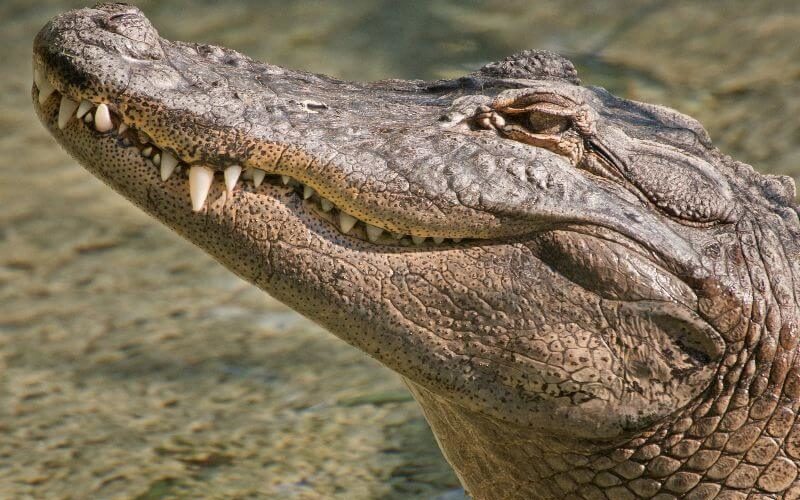
2007: Reggie the Alligator Captured
One of the Zoo’s most famous residents, American alligator Reggie, arrived on May 24, 2007. Once someone’s pet, Reggie had been dumped in Lake Machado by his owners in 2005. He evaded capture for two years, becoming a media sensation in the process. Curator of Reptiles Ian Recchio led the effort that led to the alligator’s capture and translocation to the Zoo.
2008: Saving Peninsular Pronghorn from Extinction
A pair of peninsular pronghorn (also known as berrendo) born at the Los Angeles Zoo on March 24, 2008, marked a milestone in the species’ recovery. Eight years earlier, the L.A. Zoo had joined the Peninsular Pronghorn Recovery Project, a joint effort of the Mexican government, the Vizcaino Biosphere Reserve, and several zoos. In addition to providing financial assistance and staff collaboration, the L.A. Zoo imported a group of pronghorn to establish an insurance population in the U.S. As of 2023, a total 0f 55 pronghorn fawns have been born at the Zoo. With fewer than 50 individuals believed to remain in the wild, captive breeding may the species’ last hope for survival.
2008: Student Expeditions Begin
A team of six students embarked on the first Duttenhaver Animal Conservation Field Study expedition in July 2008. The program has sent a total of 99 students around the world – accompanied by Zoo mentors – to learn about wildlife conservation by working alongside field biologists. ”It’s about training the next generation of biologists,” said former GLAZA President Connie Morgan of the program. ”I see it as an investment in the future of zoos and wildlife.”
2009: ”Bowling for Rhinos” Gets Rolling
The Los Angeles chapter of the American Association of Zoo Keepers (AAZK) held its first annual Bowling for Rhinos fundraiser on February 21, 2009, raising more than $30,000 for rhinoceros conservation. More than 80 AAZK chapters throughout the U.S. and Canada participate in the charity bowl-a-thon each year. The L.A. chapter has raised the most funds of any chapter for eight consecutive years. The AAZK has contributed more than $6 million in direct support to reduce poaching and protect ecosystems that support rhinos and the species that share their habitat.
2009: Rattleless Rattlesnakes Slither to the Zoo
In May 2009, Curator of Reptiles, Amphibians, and Fish Ian Recchio made the first of two trips to Santa Catalina Island in the Sea of Cortez, which resulted in some exciting additions to the Zoo’s rare reptile collection – 12 rattleless rattlesnakes. One of these was a female that gave birth to six babies in August 2009 – the first captive birth for the species in North America in more than 30 years. The project resulted in the creation of an SSP for the unusual species.
2009: Randa the Rhino Treated for Cancer
On June 26, 2009, Indian rhinoceros Randa underwent the first of two radiation treatments after tests revealed she had squamous cell carcinoma in her horn. Randa was treated in her exhibit, with assistance from specialists from UCLA Medical Center. She responded well and has remained cancer free. When she died at age 48 in 2017, Randa was the oldest living Indian rhinoceros in any zoo.
2010: Zoo First! Successful Breeding of Komodo Dragons
In January 2010, female Komodo dragon Lima laid 24 eggs at the L.A. Zoo. Twenty-two dragons ultimately hatched, making us one of the few zoos in North America to have successfully bred Komodos. The Zoo repeated that success three more times, breeding a total of 53 dragons, most of which were sent to other zoos. Another breakthrough at the Zoo came in 2013 when staff devised a method of DNA testing to identify the giant lizards’ gender before eggs are hatched. With males far exceeding females in the captive Komodo population, DNA sexing will help ensure a more balanced population in future.
2010: ”Elephants of Asia” Opens
Years of planning and careful deliberation went into the design of the largest habitat in the history of the Los Angeles Zoo, Elephants of Asia, which opened on December 16, 2010. The design and embedded technology of the 16,600-square-foot elephant barn facilitate husbandry and veterinary care, with built-in flexibility to accommodate a herd of varying configurations. Each of the exhibit’s four yards contains a water feature, and built-in enrichment features encourage exercise and exploration.
2011: Zoobiquity Conference Debuts
The Los Angeles Zoo and UCLA hosted the first Zoobiquity Conference on January 29, 2011. Inspired by the ”One Health” movement, L.A. Zoo veterinary staff collaborated with the UCLA Office of Continuing Medical Education, UC Davis School of Veterinary Medicine, and the College of Veterinary Medicine at Western University of Health Sciences to bring together clinicians and scientists in human and veterinary medicine to discuss commonalities between human and animal diseases. The Zoobiquity conference was the brainchild of UCLA cardiologist Dr. Barbara Natterson-Horowitz.
2011: Reestablishing Critically Endangered Frogs
In June 2011, a team of biologists including L.A. Zoo keepers released two groups of captive-bred mountain yellow-legged frog tadpoles into protected habitat within San Bernardino National Park. The release represented a giant leap forward in the effort to reestablish this critically endangered species in parts of its historic range. To date, the Zoo has released more than 4,000 mountain yellow-legged frogs to the wild.
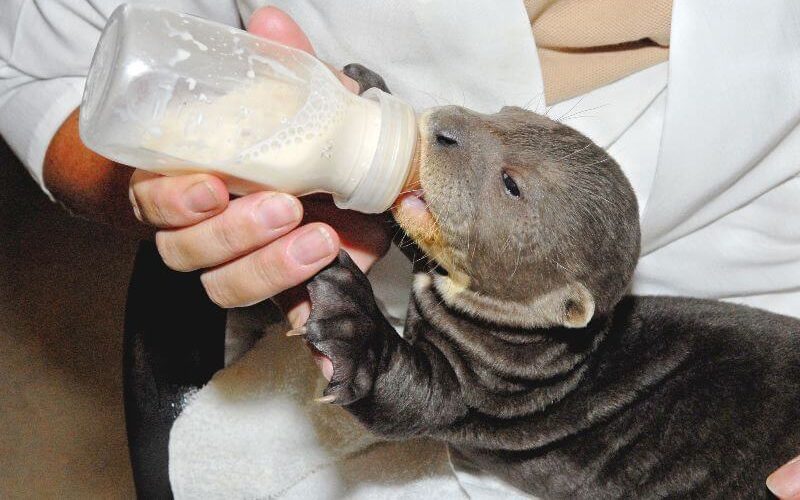
2011: Zoo First! Endangered Giant Otters Reared by Hand
The Zoo’s first successful giant otter births took place in July 2011. When the parents demonstrated difficulties in caring for the pups, animal care stepped in and for the first time in captivity hand-reared infant giant otters from birth and reintroduced them to the parents to form a family group. One of these hand-reared youngsters, Mia, matured and went on to produce her own offspring and successfully raise them on her own – another first for any zoo.
2011: Conservation Carousel Spins to Life
The Tom Mankiewicz Conservation Carousel made its debut in October 2011. The carousel features 64 hand-carved wooden figures, representing many species the Los Angeles Zoo is working to save from extinction. The carousel not only provides fun and family memories, it also generates a steady and significant source of annual revenue to support Zoo operations.
2012: The LAIR Opens Its Doors
The LAIR (Living Amphibians, Invertebrates, and Reptiles) opened on March 8, 2012. The state-of-the-art facility contains 49 exhibits in two buildings and adjacent outdoor spaces. Nursery care, food prep, and reptile egg housing are situated behind a glass wall, affording guests the opportunity to view hands-on preservation efforts. The new facility greatly enhances the staff’s ability to work with endangered and sensitive species.
2012: Zoo Hosts International Conference
In October 2012, the Los Angeles Zoo hosted the annual conference of the Association of Zoo and Aquarium Docents (AZAD). The week-long event, which marked the 25th anniversary of AZAD, drew more than 600 attendees from as far away as Australia. Serving as the site of the quarter-century celebration of zoo docentry was especially meaningful as our program, launched in 1964, was the first in the nation.
2014: Los Angeles Zoo partners with “Gorilla Rehabilitation And Conservation Education” (GRACE)
This commitment has positively impacted the lives of the rescued gorillas at GRACE as well as the staff who provide daily care and monitoring. L.A. Zoo has gone beyond just supplying financial support—they also provide staff expertise in animal care to ensure the orphaned gorillas at GRACE have the best chance possible of developing the survival skills they need to one day return to the wild. Learn more.
2014: ”Rainforest of the Americas” Opens
Unveiled to the public on April 29, 2014, Rainforest of the Americas was the last of the major projects outlined in the Zoo’s Master Plan approved by the City of Los Angeles in 1992. The sprawling 2.2-acre multispecies exhibit provided new naturalistic spaces for giant otters, harpy eagles, tapirs, toucans, and numerous other species native to the New World tropics.
2014: Holiday Light Show Debuts
The dazzling displays at L.A. ZooLights drew more than 170,000 guests during its debut season in the winter of 2014. The month-long nighttime event (now a yearly tradition) transforms the Zoo into a winter wonderland with animal-themed light displays and interactive activities.

2015: Zoo First! Butaan Hatchlings Thrive
On May 12, 2015, the Zoo’s reptile staff celebrated another breeding success when the first of three butaans (otherwise known as Gray’s monitor lizards) to hatch and survive in a North American zoo emerged from its shell. The clutch of four eggs had been carefully incubated for almost 300 days. Four additional clutches followed, making the L.A. Zoo the first in the world to reproduce multiple clutches of these rare lizards. The species, endemic to three small islands in the Philippines, was believed to be extinct for more than a century until its rediscovery in 1975.
2021: Conservation Strategic Plan
The Los Angeles Zoo launched a Conservation Strategic Plan (CSP) that outlines and expands our efforts to protect species and the habitats we share by focusing on six key areas, strengthening our partnerships, and engaging our diverse communities. Learn more
2022: KultureCity Sensory Inclusion
On March 2022, The Los Angeles Zoo joins over 900 other KultureCity certified sensory inclusive venues across five countries. Challenges with sensory regulation, or sensory needs, are often experienced by individuals with autism, dementia, PTSD, and other similar conditions. One of the major barriers for these individuals is sensitivity to overstimulation and noise, which is an enormous part of the environment in a place like the L.A. Zoo. The Zoo is now better prepared to assist guests with sensory needs in having the most comfortable and inclusive experience possible when attending the Zoo. As part of the KultureCity certification, the L.A. Zoo’s staff were trained by industry professionals on varying sensory needs, the sensory inclusive components throughout our campus, and how to best support all individuals in having a successful Zoo experience.
2024: First U.S. zoo to send a giant otter to a reintroduction program in Argentina
An eight-year-old female giant otter, Rosario, moved from the Los Angeles Zoo to Argentina to join a breeding program designed to reintroduce this species in a region where it has gone extinct. This partnership and reintroduction program led by Rewilding Argentina, the Government of Corrientes, and Argentina’s National Parks Administration, marks the first time a giant otter from an Association of Zoos and Aquariums (AZA) accredited zoo is being sent to directly contribute to their conservation efforts.
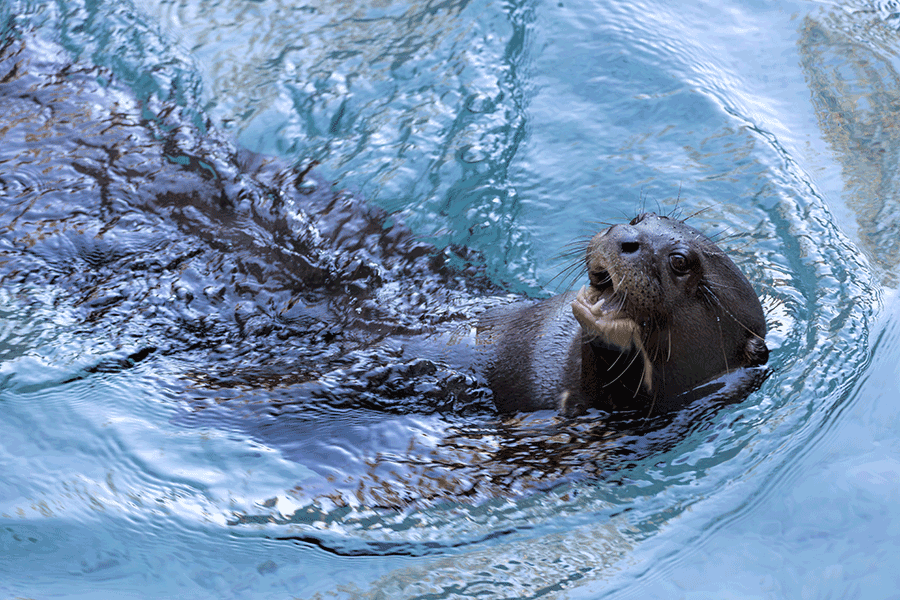
2024: L.A. Zoo Breaks Record with 17 Healthy California Condor Chicks
The Los Angeles Zoo capped off its 2024 California condor breeding season with a record-breaking 17 chicks hatched – all of which will be candidates for release into the wild as part of the California Condor Recovery Program (CCRP). The 17th and final chick of the season hatched in June and is thriving. The previous record of 15 California condor chicks hatched at the L.A. Zoo was set in 1997.
2024: L.A. Zoo Joins critical recovery program for New Mexico ridge-nose rattlesnakes
The Los Angeles Zoo joins the Arizona-Sonora Desert Museum and San Antonio Zoo for Phase I of The Rattlesnake Conservancy’s “Project Obscurus,” a landmark international recovery program for the federally threatened New Mexico ridge-nosed rattlesnake (Crotalus willardi obscurus). The three zoos will participate in a head-start breeding program aimed at bolstering and diversifying the genetics of the U.S. populations of this rattlesnake through selective managed breeding and eventual release of offspring into their native habitat. Learn more.

